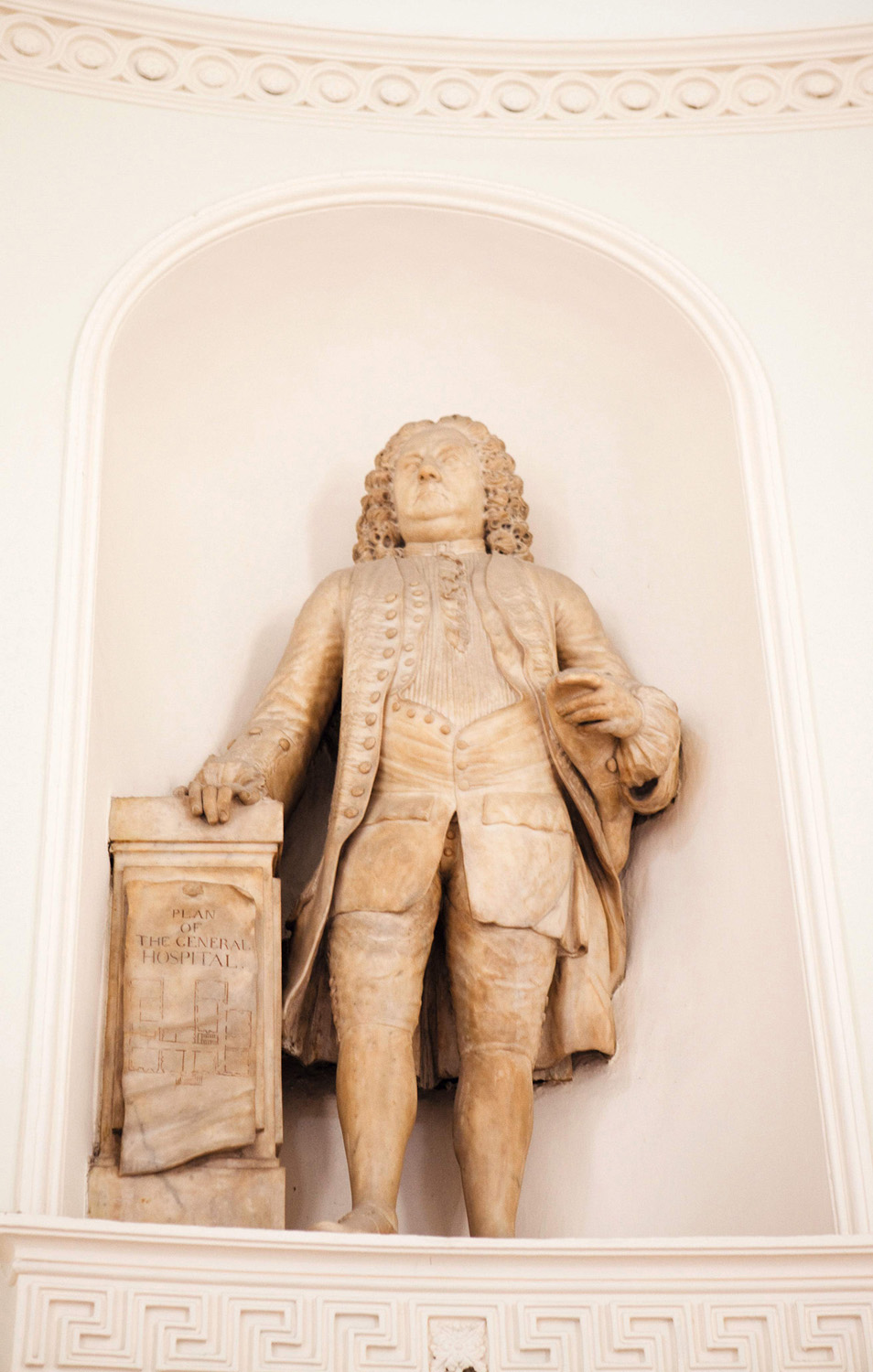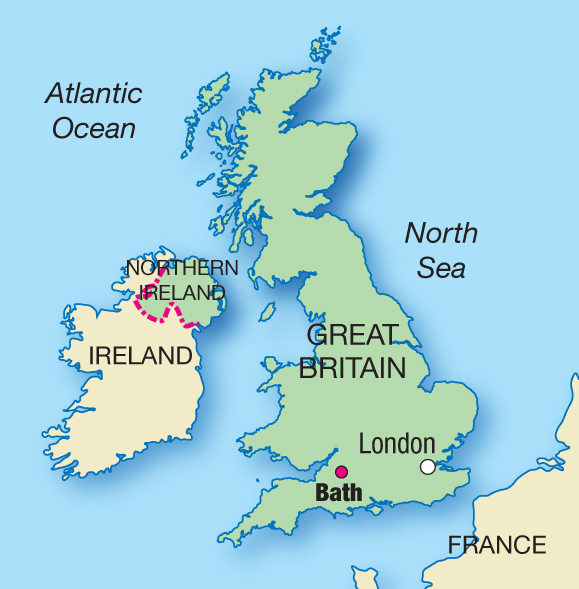
View of Bath Abbey and the Pump Room.
Corbis
Declared a Unesco World Heritage Site in 1987, Bath has been attracting visitors since pre-Roman times, drawn to its natural spring waters. Today it is a gracious and beautiful city in an incomparable setting, and most visitors find themselves falling in love with it. All significant stages of English history are represented here, from the Roman Baths to medieval Bath Abbey, from the Georgian splendour of the Royal Crescent to the modern Thermae Bath Spa development – the only place in Britain where you can bathe in natural hot spring water. Thanks to its rich past and architectural heritage, combined with a vibrant shopping centre, year-round festivals and lively entertainment scene, Bath is one of Britain’s most appealing cities.
LANDSCAPE AND CLIMATE
The city lies cradled amid several hills in the Mendips, home to its famous pale stone as well as the hot springs that have been the source of its popularity since Celtic times. Dissected by the Avon River, which flows into the Severn estuary at Avonmouth, the Kennet and Avon Canal (1810) and the Great Western Railway (1841), the city covers 11 hilly sq miles (29 sq km). It centres on the ancient Abbey and Roman Baths, with Georgian Bath spreading north to the Upper Town and east over the river to Bathwick.
It is situated 97 miles (156km) west of London and 13 miles (21km) south-east of the large port city of Bristol. Bath has a population of 90,000, though this number is boosted by almost four million tourists a year and out-of-towners who come for its shops, restaurants, theatre and concerts. The surrounding hills give Bath its steep streets and make its buildings appear to climb the slopes. While in many minds the city is associated with middle-class retirees, its population is a mix of old and young, the latter boosted by a strong student presence from Bath University, Bath Spa University, and City of Bath College.

Intricate fan vaulting inside Bath Abbey.
APA/Corrie Wingate

The Roman Baths complex offers a fascinating insight into the beliefs and customs of Ancient Rome.
APA/Corrie Wingate
Bath, like the rest of southwest England, has a temperate climate and is generally wetter and milder than much of the rest of England. January is the coldest month with mean minimum temperatures between 1° and 2°C (34–36°F), while July and August are generally the warmest months, with a mean daily maximum of around 21°C (70°F). When the sun shines in Bath, its buildings seem to come truly alive, and there are plenty of open spaces and parks to enjoy.
A RICH HISTORY
In the 1st century AD, the Romans built a temple and baths on the site of the sacred hot springs, which attracted pilgrims from all over the Roman Empire who would come to petition the god Sulis Minerva and to bathe in the healing waters. When the Romans abandoned Britain in the 5th century AD, Bath fell into relative decline.
The city was revived in the 18th century during a period known as the Georgian era, referring to the reign of four kings named George, from 1714–1830. During this time, a long-neglected provincial retreat was transformed into a fashionable spa with the help of three self-made men: Richard (Beau) Nash, a charismatic dandy, Ralph Allen, an astute businessman, and John Wood, a trail-blazing architect. Developments in the social sphere, led by Master of Ceremonies Nash (also known unofficially as the King of Bath), were accompanied by the planning and building of what amounted to a new city, in which Allen and Wood played significant roles. Allen made his fortune by transforming and modernising the postal system, making him one of the founders of the modern post office. Having acquired the nearby quarries of local stone, he encouraged the brilliant young architect, John Wood the elder, to realise his visions in Bath stone. The legacy of Wood and his son can be seen in the shape of the Royal Crescent, the Circus, Queen Square, the Assembly Rooms and Prior Park, with other architects following their lead to create a bustling, elegant Georgian city that still thrives today.

Statue of the celebrated dandy Beau Nash in the Pump Room.
APA/Corrie Wingate
Food and Drink
Bath boasts a number of local specialites worth sampling. Sally Lunn buns have long been baked in Bath and are still available at the restaurant of the same name. The famous Bath Soft Cheese is a reproduction of a lost recipe dating back to the time of Admiral Lord Nelson, while Wyfe of Bath cheese is quickly catching up in terms of popularity and reputation. The Bath Oliver is a dry-baked biscuit invented in the 18th century by Dr William Oliver, an early anti-obesity campaigner.
All the traditions of Bath from that era – the healing of the sick, the cultivation of the arts and the entertainment of visitors – were carried on into the 19th and 20th centuries and are still evident today. With its Thermae Bath Spa complex, which has attracted about 200,000 visitors annually since opening in 2006, the city has returned to its roots, allowing visitors a unique opportunity in Britain to enjoy the natural thermal waters in a striking contemporary setting, alongside up-to-the-minute health and beauty treatments. The development was voted the best spa in the world for the second time at the Ultra Travel awards in 2010.
The city used to have an important manufacturing sector, including the famed crane makers Stothert & Pitt, but manufacturing is now in decline in the city, which looks instead to its growing technology, creative and service-oriented industries, alongside its crucial tourism sector.
Find our recommended restaurants at the end of each Tour.
